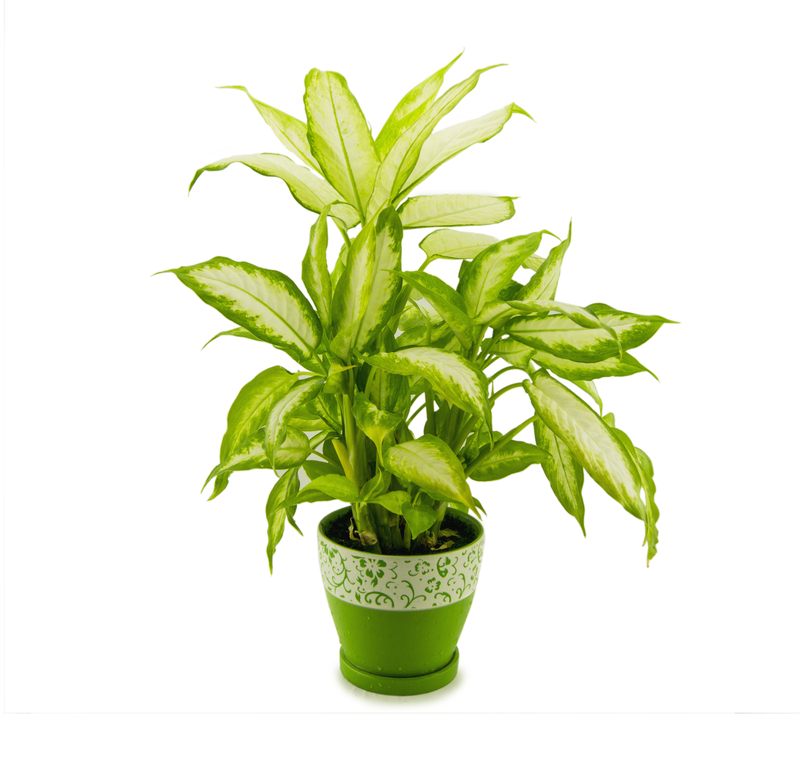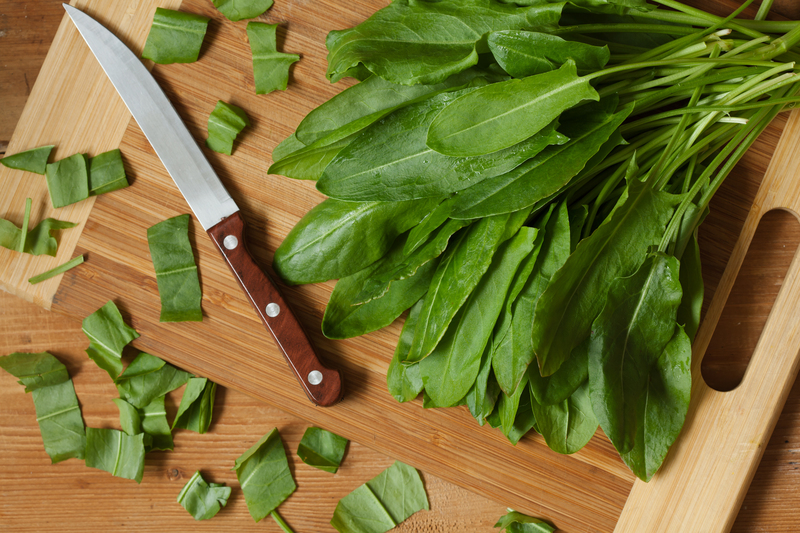Container Gardening: A Comprehensive Guide
Posted on 01/06/2025
Container Gardening: A Comprehensive Guide
Container gardening has steadily gained popularity among urban dwellers, homeowners with limited space, and gardening enthusiasts worldwide. This inclusive practice allows almost anyone to cultivate beautiful flowers, lush greenery, or even a bountiful harvest, regardless of available land. In this detailed guide, we'll delve into every aspect of container gardening, empowering you to design, develop, and maintain your very own thriving potted oasis.
What is Container Gardening?
Container gardening is the art and science of growing plants exclusively in pots, tubs, and other containers, rather than planting them directly in the ground. It is an ideal solution for people with limited outdoor space, poor soil conditions, or the desire to create portable and flexible gardens.
- Flexibility: You can place containers on balconies, windowsills, patios, rooftops, and even indoors.
- Control: Personalize soil composition, adjust watering schedules, and move plants as needed.
- Creativity: Experiment with various styles, color palettes, and container shapes.

Benefits of Container Gardening
Why choose container gardening over traditional gardening methods? Here are some compelling reasons:
- Adaptable: Grow plants in small or unconventional spaces.
- Accessible: Easier for individuals with mobility limitations.
- Disease Control: Isolate plants to minimize the spread of pests and diseases.
- Season Extension: Move containers indoors to lengthen the growing season.
- Personalized Environment: Customize sunlight, shade, water, and nutrients for each container.
Choosing the Right Containers for Your Plants
Types of Containers
When creating a container garden, the possibilities for vessel selection are endless. Your choice will affect your plant's health, aesthetics, and the overall success of your garden. Here are popular container options:
- Terracotta Pots: Attractive, porous, but can dry out quickly. Ideal for Mediterranean plants.
- Plastic Containers: Lightweight, affordable, and retain moisture well. Perfect for larger or mobile projects.
- Ceramic/Glazed Pots: Decorative and available in various styles, but heavy and may not be frost-proof.
- Metal Containers: Trendy and modern; however, they can heat up quickly and affect root temperature.
- Wooden Boxes/Barrels: Rustic and insulate roots, though they need to be treated for rot-resistance.
- Repurposed Items: Old boots, buckets, and crates add character and creativity to container gardening designs.
Key Factors for Selecting Containers
Your container must provide:
- Good Drainage: Drainage holes are essential to prevent water-logged roots and plant death.
- Space: Adequate size for roots to grow and plants to thrive.
- Material Suitability: Consider climate, weight, and the type of plant you wish to grow.
Picking the Best Potting Mix
The soil you use in container gardening is pivotal. Regular garden soil is often too dense and lacks enough drainage for containers.
- Use Potting Mix: Specially designed for containers, it ensures aeration and water retention.
- Add Amendments: Incorporate perlite, vermiculite, or coconut coir for better moisture control.
- Consider Fertility: Opt for potting soils with slow-release fertilizers or add your preferred nutrients.
What Can You Grow in Containers?
Container gardening is versatile enough for almost any type of plant, including:
- Flowers and Ornamental Plants: Petunias, pansies, marigolds, geraniums, impatiens, and more.
- Herbs: Basil, parsley, chives, thyme, mint, rosemary, and oregano.
- Vegetables: Tomatoes, lettuce, radishes, cucumbers, peppers, carrots, and eggplants.
- Fruits: Strawberries, dwarf citrus trees, blueberries, and figs.
- Small Shrubs and Trees: Topiary, boxwood, olive trees, and dwarf conifers.
- Houseplants: Succulents, spider plants, pothos, and ferns for indoor container gardens.
Step-By-Step Guide to Successful Container Gardening
1. Choose the Right Location
Your container plants need proper sunlight, air circulation, and protection from harsh weather. Most vegetables and flowers prefer at least six hours of sunlight per day. Observe your space and select spots accordingly, keeping in mind shifting light patterns throughout the year.
2. Select Appropriate Containers and Potting Mix
As discussed above, the right combination of pot and soil is crucial. Always ensure pots have drainage holes and fill them with high-quality potting mix.
3. Plan Your Plant Combinations
If combining multiple species in one pot, pay attention to their water, sun, and nutrient needs. The "thriller, filler, spiller" method is popular:
- Thriller: A focal-point plant, tall and eye-catching (e.g., spikes, tall grasses).
- Filler: Medium, bushy plants that fill space (e.g., petunias, coleus).
- Spiller: Cascading plants that drape over the pot's edge (e.g., ivy, sweet potato vine).
4. Plant With Care
- Fill containers with potting mix, leaving an inch or two from the rim.
- Water the plants before removing them from nursery pots.
- Loosen roots gently and plant at the same depth as before.
- Tamp soil gently and water thoroughly after planting.
5. Watering Your Container Garden
Maintaining proper moisture is a common challenge in container gardening. Most container plants dry out faster than those in the ground. Here's how to keep them hydrated:
- Check Daily: Especially in summer, test soil moisture with your finger or a moisture meter.
- Water Deeply: Keep watering until liquid runs from the drainage holes.
- Avoid Overwatering: Too much water can drown roots. Use self-watering containers or place trays beneath pots if needed.
6. Fertilize Properly
Container plants quickly use up available nutrients. Use slow-release fertilizers mixed into the soil at planting or supplement with liquid feeds every few weeks during the growing season.
7. Pruning, Deadheading, and Maintenance
- Pinch Back: Encourage bushiness in some plants by pinching growing tips.
- Deadhead Regularly: Remove spent flowers to promote more blooming.
- Monitor for Pests: Check leaves and soil for bugs and treat as necessary.
- Repot When Needed: If plants become root-bound or outgrow their pot, move them to a larger container.
Seasonal Tips for Container Gardening
Spring
- Start Seeds Indoors: Begin growing annuals and vegetables in small pots to transplant after frost.
- Refresh Soil: Replace or rejuvenate potting mix before the new season.
- Prune Perennials: Cut back overwintered plants and feed with a balanced fertilizer.
Summer
- Water More Frequently: Hotter weather means containers dry faster.
- Shade Sensitive Plants: Use umbrellas or move pots to avoid scorching.
- Fertilize Regularly: Rapid growth requires consistent feeding.
Autumn
- Switch to Autumn Bloomers: Add mums, asters, or ornamental cabbages for fall color.
- Reduce Watering: Cooler temps mean less frequent watering.
- Prepare for Overwintering: Move tender plants indoors or provide protection.
Winter
- Insulate Pots: Wrap containers or cluster together for warmth.
- Water Sparingly: Only as needed if plants are dormant.
- Enjoy Evergreens: Use conifers, hollies, or winter pansies for low-season interest.
Common Challenges and Solutions in Container Gardening
Even seasoned green thumbs encounter problems in container gardening.
- Poor Drainage: Always ensure containers have holes. Add a gravel layer at the bottom if necessary (but good soil structure is paramount).
- Wilting Plants: Check for under or overwatering. Waterlogged roots can mimic drought symptoms.
- Yellowing Leaves: May indicate a nutrient deficiency or water issue. Fertilize and adjust watering.
- Pests: Regularly inspect for aphids, spider mites, or slugs. Treat promptly with organic or chemical controls as desired.
- Root-Bound: Repot plants that stop growing or dry out quickly, indicating roots have filled the pot.
Design Inspiration for Container Gardens
Get creative with your container gardening approach. A few styling ideas:
- Edible Container Gardens: Mix herbs, small vegetables, and fruits for beauty and harvest.
- Themed Color Palettes: Choose colors that complement your outdoor furniture or home's exterior.
- Vertical Gardens: Stack pots, use wall-mounted pockets, or hang baskets for a space-saving effect.
- Sensory Gardens: Incorporate fragrant flowers or tactile leaves to delight the senses.
- Seasonal Displays: Rotate contents for spring bulbs, summer annuals, autumn foliage, and winter evergreens.

Frequently Asked Questions About Container Gardening
What are the easiest plants to grow in containers?
Herbs like basil, mint, and thyme; vegetables such as lettuce and cherry tomatoes; and flowers like marigolds and petunias are beginner-friendly choices.
How often should I water my container plants?
This depends on plant variety, container type, and weather. Most need water once a day during hot summer months and less frequently in cooler seasons.
Can I reuse potting soil?
Yes, but refresh it by removing old root matter, mixing in new compost, and adding slow-release fertilizer before replanting.
Do containers need to be brought indoors for winter?
If you live in a region with freezing temperatures, bring tender plants and ceramic pots indoors, or protect them with insulation and mulch outside.
Is container gardening eco-friendly?
Container gardening can be very sustainable, especially if you choose recycled materials for pots, organic fertilizers, and water-efficient practices.
Conclusion: Embrace the Joys of Container Gardening
Whether you are an apartment dweller yearning for a patch of green or a homeowner seeking flexible garden designs, container gardening opens endless possibilities for creativity, enjoyment, and productivity. By selecting the right containers, using premium potting mixes, and providing attentive care, you'll cultivate a flourishing container landscape - all in your own unique style.
Get started today and transform any space, large or small, into a personal garden retreat. Happy gardening!

